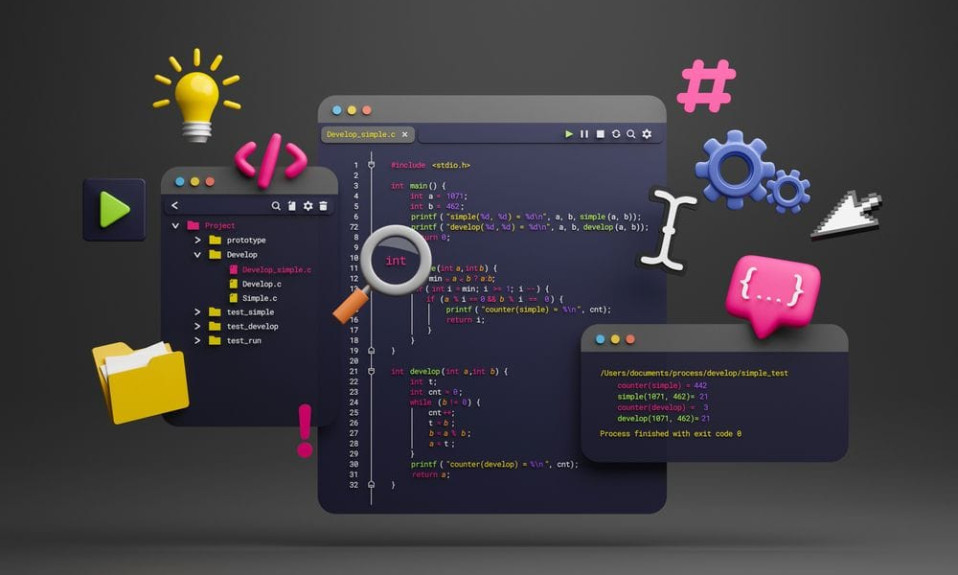If you are a freelancer or a small agency, the biggest challenge you will face at the start of your new journey is getting new clients.
In this post, I will not cover niche selection because that’s a whole different topic. But I am assuming that you are aware of the importance of niche selection and becoming a category leader in your niche.
Focusing on one niche gives you tremendous advantages such as:
- Having an in-depth understanding of customers in a single niche than being a marketer that does marketing for everyone in every industry.
- Easier to get more clients and convert them because they are looking for specialized skills and not specific skills.
- Ability to start building web properties such as blogs and community and helping your clients by building an audience for them yourself.
Assuming that you at least have an idea about what kind of services you are providing and which industry you are serving, what’s the next step?
How to prospect? How do get meetings with potential clients, and how do you convert them? That’s what we are going to learn today.
Building Authority and Trust
You will not approach a doctor let alone let him/her prescribe medicines for you unless you treat the doctor as authoritative and trustworthy.
Trust is not something that you do for a single day and then get people to trust you. Trust is not a hack. It is a way of living.
Trust has many components, but trust starts with familiarity. You trust your childhood friend because you have known them for a long time. We naturally trust parents and siblings because we know them for a long time. Enough interactions with them over a period of time have helped us understand whether they can be trusted or not.
On the other side of the same coin, we also know whom not to trust because of past behavior. We all have school friends who we know we can’t trust. Maybe they took a 1000 rupee loan from us, but they did not repay. Such incidents make our alarm bells go up and we are less likely to trust them in the future.
If you are a freelancer or running an agency, you need clients to trust you. And the first part of that trust is built with familiarity. Marketing Sherpa blog says that it takes on average 7 months for a prospect to become a client. Long sales cycles are a norm in the B2B space and I wouldn’t be surprised if the sales cycles become even longer.
Most of the clients I have gained today for my Digital Marketing Agency PixelTrack® have been following my content for years. When they think of digital marketing, I come to their mind. Whether I have market share or not, I do have the mind share, and mind share can be converted into market share if you know how to sell.
Account Based Marketing
When you are a freelancer or agency trying to get clients, they are B2B clients. You are marketing to decision-makers of businesses. This means that you cannot run branding campaigns (at least during the early stages) to get more people to know you.
There is no benefit in „getting the word out there” because people might remember and know who you are, but trust is not built just by putting your face/logo all over the place. If that’s the case, then politicians would be the most trusted people on the planet.
Even if you have an unlimited marketing budget (as a thought experiment), you can’t run TV ads or newspaper ads to get more people on your client’s list. B2B sales are driven through conversations, not through advertising.
Brand awareness needs to be converted into trust, and that can be done only by adding value upfront. And the easiest and most straightforward way to add value to your potential clients is to create content that is relevant, specific, and useful.
If you are reading this article right now, it means that it is valuable for you and that’s why you are paying attention to my content. And if you have come this far, I am pretty sure that this is not the first time you are coming across my content. You have read/watched my content before, you know that there is going to be value in it, and that’s why you are investing your time and attention to read this content.
Even before clients pay you money, they need to pay you the attention and they pay attention because they trust that the content will be worth their attention. That’s where the trust-building process starts.
You don’t need everyone in the world to be on your email list or blog subscriber base. You just need your target customers on the list. And as long you keep engaging them with valuable content, you are building trust with them. And the best way to deliver content is via email.
These are all the methods to create content and publish it for your target audience.
- Email Newsletter (Drip marketing)
- Blog posts (like this)
- Guest posts on other’s blogs
- Your YouTube channel
- Community engagement (forums and discussion groups)
- Offline events (and record them and put them back online)
I use my email newsletter as the central foundation for my subscriber management.
I recently spoke to a potential client of mine who wants to get more leads. I suggested that he should focus on content and email marketing. His next question was: who reads emails anymore?
I asked him to subscribe to my 100-day lead generation course, which has been over a month. He has opened every email to date. He answered his question himself. Sophisticated internet users (who are ideally your target customers) read emails.
Since he has been opening all the emails, he is pretty convinced that his customers will also open emails and he will be able to scale his business using deep marketing.
We are now working on a lead magnet for him that can work at the top of the funnel to generate leads. After the lead magnet is ready, we will create a landing page to get subscribers and add emails on the CRM in a drip sequence that can engage the leads.
Now that we have seen a high-level overview of how this process works, let’s dive deep into the CATT funnel and take up this process step-by-step.
The CATT Funnel
The CATT funnel is a funnel that I have conceptualized and I have been preaching this and practicing it for years if not decades.
It is the new version of the AIDA funnel (Attention, interest, decision, action).
The AIDA funnel is a good framework for sales and salesmen. Watch Alec Baldwin’s speech in Glengarry Glenross for an insight into it. (Viewer discretion advised).
In the digital marketing era, the AIDA funnel doesn’t fit. It still works for 1on1 sales calls but since then a lot of new frameworks have come into existence.
The CATT framework is more of a marketing framework than a sales framework.
This is what it means:
- Content
- Attention
- Trust
- Transaction
Content: Content is what people pay attention to. TV, Radio, Newspapers, and Magazines – all make content to attract subscribers. The advertising that is slipped in between the content is just a distraction. Even if you can buy attention directly, you still need to make content that attracts high-quality attention. High-quality attention doesn’t come from 30-second ad jingles unless you are selling soap. The 100-day lead generation course I made, this article, and all the emails that I send, are content that will attract attention.
Attention: Content, by itself, no matter how good it is, won’t attract attention. The attention has to be driven to it. There are free methods and paid methods to drive this attention. If your blog ranks well in the search engines, you might get attention for free. But this attention is not going to scale on demand. It is good to have when it comes, but you have less control over it. Paid traffic brings in attention, but you need not drive attention for all the content you create. You just need to drive attention to the first piece of content in the sequence. The rest is taken care of by itself if you have set up the funnel properly.
Trust: Not all attention converts into trust by itself. You need to be strategic about your content to build trust. If any kind of attention converts into trust, then movie gossip sites would command the most trust. When you are building a funnel, the content needs to sell more attention and your trust-building messages have to be woven within the content. The best type of content to build trust is written words. Written words still have some kind of power that videos and images do not have. It is direct and personal to the person reading it.
Transaction: You cannot invest in content, attention, and trust-building unless you have the money to invest in them. Yes, you can invest your time and energy in the beginning, but it is not scalable. When you want to scale attention, you need money. And that money can only come from the transaction. That’s why Transaction is the most important part of the entire funnel. It makes the funnel possible. You can trigger transactions through the conversion process and that is a whole topic in itself.
Step-by-Step Implementation Plan
Until now, we have been discussing about the fundamentals of B2B account-based marketing and the CATT funnel. But you might be looking for a step-by-step implementation plan that brings this into reality.
Here’s how I would do it. You can modify the steps based on your strengths. I had to dive deep into the strategies before getting deep into the tactics because understanding the framework helps you tinker with the process and make it work for you.
- Identify who is your target audience. Ideally, the persona of the decision-makers who can become your client.
- Build a lead magnet that attracts them. For example, one of the best-performing lead magnets I have is the 100-day lead generation course. Most of my clients are looking for help in lead generation. Before I help them with lead generation, I ask them to learn lead generation from me. It provides value and builds my brand.
- The lead magnet has to have a set of follow-up emails that provide value over a period of time, ideally via email. In my 100-day lead generation course, there are 100 emails sent over a period of 100 days with one lesson every day.
- In each email, I give them a link to apply for working with me. After reviewing the application, we ask them to book a call with our sales team. If the client is a potential big-ticket client, I attend the call myself.
- If the person is a good fit, I convert the free consultation into a paying client.
I don’t mean to make it simple by making it sound simple. There are a lot of intricacies to this process. But I have given you the overall framework in which to operate. This is proven to work and most people do not do it because they do not have the patience to build a funnel.
If you are interested in diving deeper into this, you might be interested in AlphaClub, our exclusive mastermind for consultants, coaches, freelancers, and small agency owners.
It takes time to build conviction in the process. And I have shown that it works. It just needs some patience. Patience to let the content do its work. It takes time to build that trust and it is worth it.
Cheers,
Deepak Kanakaraju









